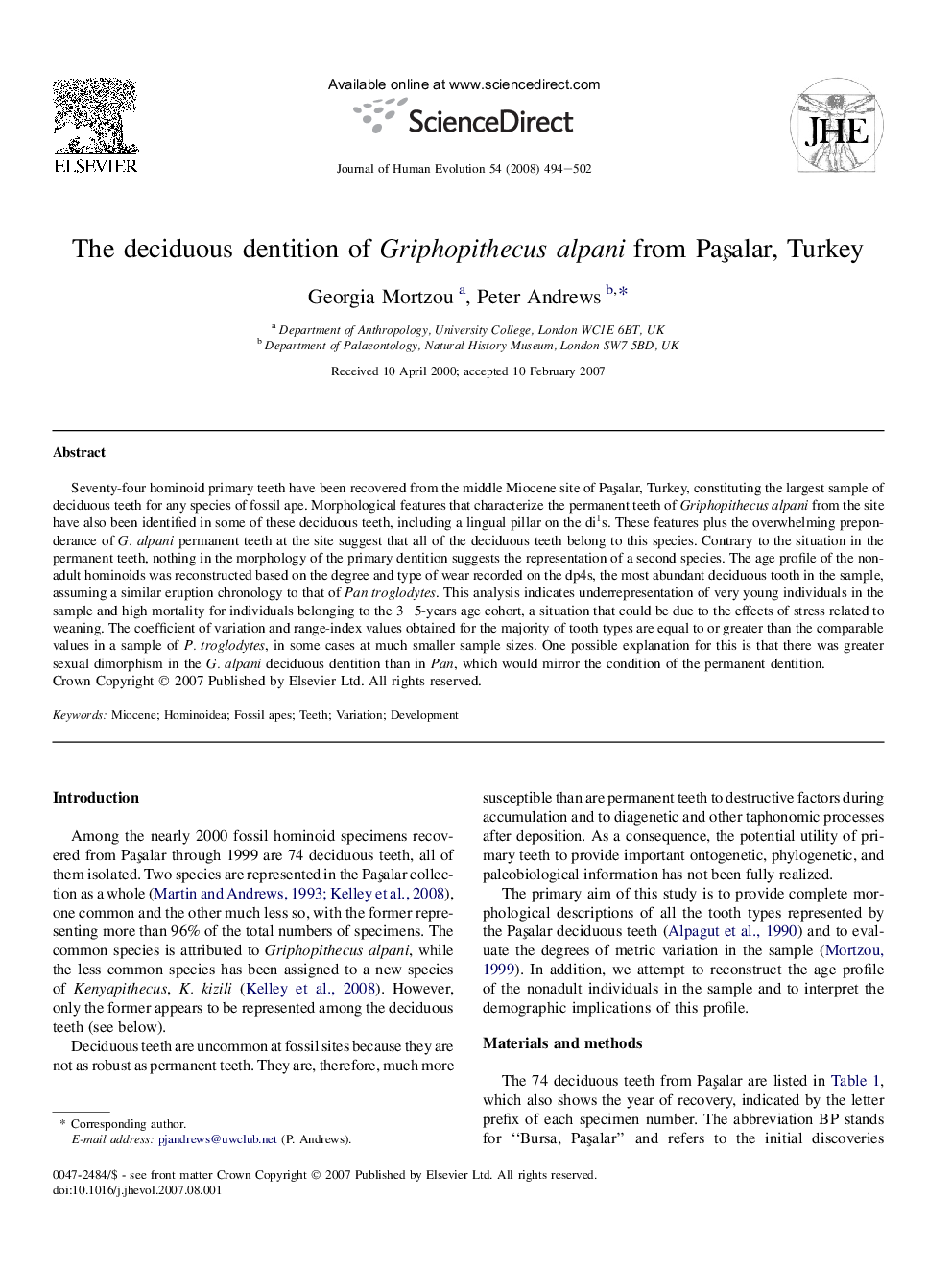| Article ID | Journal | Published Year | Pages | File Type |
|---|---|---|---|---|
| 4557087 | Journal of Human Evolution | 2008 | 9 Pages |
Seventy-four hominoid primary teeth have been recovered from the middle Miocene site of Paşalar, Turkey, constituting the largest sample of deciduous teeth for any species of fossil ape. Morphological features that characterize the permanent teeth of Griphopithecus alpani from the site have also been identified in some of these deciduous teeth, including a lingual pillar on the di1s. These features plus the overwhelming preponderance of G. alpani permanent teeth at the site suggest that all of the deciduous teeth belong to this species. Contrary to the situation in the permanent teeth, nothing in the morphology of the primary dentition suggests the representation of a second species. The age profile of the nonadult hominoids was reconstructed based on the degree and type of wear recorded on the dp4s, the most abundant deciduous tooth in the sample, assuming a similar eruption chronology to that of Pan troglodytes. This analysis indicates underrepresentation of very young individuals in the sample and high mortality for individuals belonging to the 3–5-years age cohort, a situation that could be due to the effects of stress related to weaning. The coefficient of variation and range-index values obtained for the majority of tooth types are equal to or greater than the comparable values in a sample of P. troglodytes, in some cases at much smaller sample sizes. One possible explanation for this is that there was greater sexual dimorphism in the G. alpani deciduous dentition than in Pan, which would mirror the condition of the permanent dentition.
